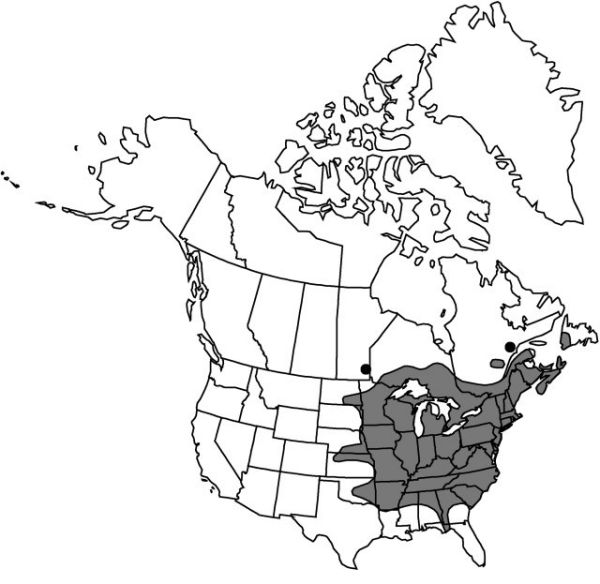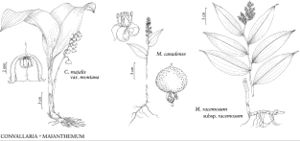Maianthemum racemosum subsp. racemosum
Stems arching. Leaves petiolate; blade base tapered; apex of third leaf below inflorescence caudate, 12–25 mm; petiole 2–6 mm.
Phenology: Flowering mid spring; fruiting early summer–autumn.
Habitat: Deciduous woodlands, persisting along shaded roadsides and urban and suburban wooded tracts
Elevation: 0–800 m
Distribution

Man., N.B., Nfld. and Labr. (Nfld.), N.S., Ont., P.E.I., Que., Ala., Ark., Conn., Del., D.C., Fla., Ga., Ill., Ind., Iowa, Kans., Ky., La., Maine, Md., Mass., Mich., Minn., Miss., Mo., Nebr., N.H., N.J., N.Y., N.C., N.Dak., Ohio, Okla., Pa., R.I., S.C., S.Dak., Tenn., Tex., Vt., Va., W.Va., Wis.
Discussion
Subspecies racemosum is distinguished from subsp. amplexicaule by its erect habit, clasping leaves, and short-acute leaf apex; these differences can be seen in the two color photographs in H. W. Rickett ([1966–1973], vol. 1(1), plate 6; vol. 5(1), plate 8).
Selected References
None.
Lower Taxa
"thicker" is not a number."dm" is not declared as a valid unit of measurement for this property.
